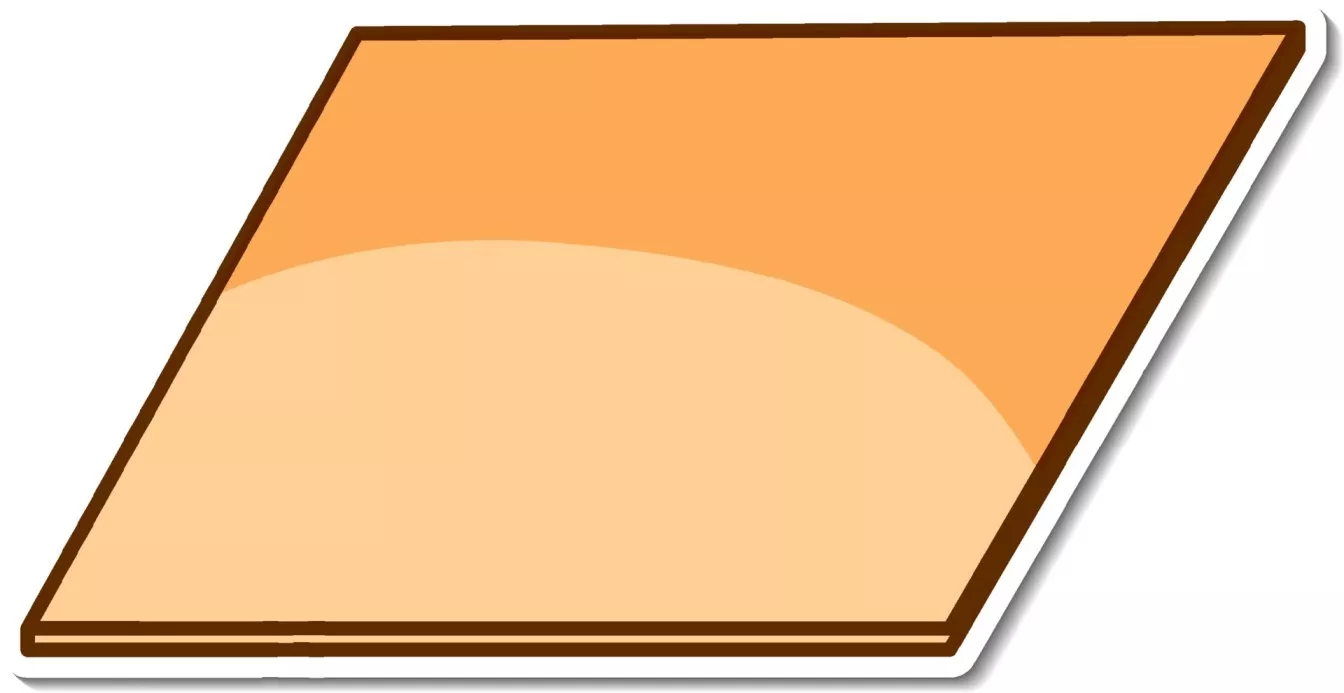Whole Number Strategy: Gap & Difference
In this article, we are going to learn a strategy for Whole Numbers: Gap and Difference.
The lesson objectives are:
- Shortage/shortage
- Excess/excess
- Shortage/excess
1. Gap And Difference — Shortage/shortage
Do look at the models drawn and use them to help you solve the problem.
Question 1:
Sylvia wants to pack her game cards. If she packs \(8\) cards into each packet, she will need another \(13\) cards. If she packs \(7\) cards into each packet, she will need another \(5\) cards. How many cards does she have?
Solution:
In the above question, we have two scenarios.
Case 1:
She packs \(8\) cards in each packet and has a shortage of \(13\) cards.
Case 2:
She packs \(7\) cards in each packet and has a shortage of \(5\) cards.

\(\begin{align} \text{Difference}&= 8 - 7\\[2ex] &=1\\[4ex] \text{Gap}&= 13 - 5\\[2ex] &=8\\[4ex] \text{Number of packs} &= \text{Gap} \div \text{Difference}\\[2ex] &= 8 \div 1\\[2ex] &=8 \end{align}\)
Using Case 1:
\(\begin{align} \text{Number of cards that she has} &= 8 \text{ packs } 8 \text{ cards} - 13\\[2ex] &= 64 -13\\[2ex] &= 51 \text{ cards} \end{align}\)
Using Case 2:
\(\begin{align} \text{Number of cards that she has} &= 8 \text{ packs } 7 \text{ cards} - 5\\[2ex] &= 54 - 5\\[2ex] &= 51 \text{ cards} \end{align}\)
Answer:
\(51 \text{ cards}\)
Question 2:
A group of pupils share a box of pens among themselves. If each pupil gets \(6\) pens, they will need another \(11\) pens. If each pupil gets \(5\) pens, they will need another \(4\) pens.
- How many pupils are there?
- How many pens are there in the box?
Solution:
Case 1:
If each pupil gets \(6\) pens, there is a shortage of \(11\) pens.
Case 2:
if each pupil gets \(5\) pens, there is a shortage of \(4\) pens.

A)
\(\begin{align} \text{Difference} &= 6 - 5\\[2ex] &= 1\\[4ex] \text{Gap}&= 11 - 4\\[2ex] &= 7\\[4ex] \text{Number of packs} &= \text{Gap} \div \text{Difference}\\[2ex] &= 7 \div 1\\[2ex] &= 7 \end{align}\)
Answer:
\(7 \text{ pupils}\)
B)
Using Case 1:
\(\begin{align} \text{Number of pens in the box} &= 7 \text{ pupils } 6 \text{ pens} - 11\\[2ex] &= 42 -11\\[2ex] &= 31 \text{ pens} \end{align}\)
Using Case 2:
\(\begin{align} \text{Number of pens in the box} &= 7 \text{ pupils } 5 \text{ pens} - 4\\[2ex] &= 35 -4\\[2ex] &= 31 \text{ pens} \end{align}\)
Answer:
\(31 \text{ pens}\)
Question 3:
Mrs Tan had some marbles to pack into a certain number of boxes. If she packed \(7\) marbles into each box, the last box would have \(6\) marbles. If she packed \(12\) marbles into each box, the last box would have \(1\) marble. How many boxes did she have?
Solution:
Case 1:
If she packed \(7\) marbles in each box, there is a shortage of ( \(7-6=1\) ) marble.
Case 2:
If she packed \(12\) marbles in each box, there is a shortage of ( \(12-1=11\) ) marbles.

\(\begin{align} \text{Difference} &= 12 - 7\\[2ex] &= 5\\[4ex] \text{Gap}&= 11 - 1\\[2ex] &= 10\\[4ex] \text{Number of packs} &= \text{Gap} \div \text{Difference}\\[2ex] &= 10 \div 5\\[2ex] &= 2 \end{align}\)
Answer:
\(2 \text{ boxes}\)
Question 4:
Keagan has \(7\) boxes of chocolates to distribute to his friends. If he gives \(9\) chocolates to each friend, he would be short of \(30\) chocolates. If he gives \(8\) chocolates to each friend, one of his friends would not get any chocolates. How many chocolates are there in each box?
Solution:
Total boxes of chocolates \(\displaystyle{=7}\) boxes
Case 1:
If each friend gets \(9\) chocolates, there is a shortage of \(30\) chocolates.
Case 2:
If each friend gets \(8\) chocolates, there is a shortage of \(8\) chocolates since one friend did not get any chocolates.

\(\begin{align} \text{Difference} &= 9 - 8\\[2ex] &= 1\\[4ex] \text{Gap}&= 30 - 8\\[2ex] &= 10\\[4ex] \text{Number of packs} &= \text{Gap} \div \text{Difference}\\[2ex] &= 22 \div 1\\[2ex] &= 22 \end{align}\)
Using Case 1:
\(\begin{align} \text{Number of chocolates} &= 22 \text{ friends } \times 9 \text{ chocolates} - 30\\[2ex] &= 198 - 30\\[2ex] &= 168 \text{ chocolates} \end{align}\)
Using Case 2:
\(\begin{align} \text{Number of chocolates} &= 22 \text{ friends } \times 8 \text{ chocolates} - 8\\[2ex] &= 176 - 8\\[2ex] &= 168 \text{ chocolates} \end{align}\)
\(\begin{align} \text{Number of chocolates in each box} &= 168 \div 7\\[2ex] &= 24 \text{ chocolates} \end{align}\)
Answer:
\(24 \text{ chocolates}\)
2. Gap And Difference — Excess/excess
Do look at the models drawn and use them to help you solve the problem.
Question 1:
Vicky has some money. If she buys \(12\) cups, she will have \($14.50\) left. If she buys \(15\) cups, she will have \($6.25\) left. How much does each cup cost?
Solution:
Case 1:
If she buys \(12\) cups, she will have an excess of \($14.50\).
Case 2:
If she buys \(15\) cups, she will have an excess of \($6.25\).

\(\begin{align} \text{Difference} &= 15-12\\[2ex] &= 3\\[4ex] \text{Gap}&= $14.50 - $6.25\\[2ex] &= $8.25\\[4ex] \text{Cost of 3 cups } &= $8.25\\[4ex] \text{Cost of 1 cups } &= $8.25 \div 3\\[2ex] &= $2.75 \end{align}\)
Answer:
\($2.75\)
Question 2:
Mrs Mabel has some money. If she buys \(13\) apples, she will have \($35\) left. If she buys \(20\) apples, she will have \($20.30\) left. How much money does she have?
Solution:
Case 1:
If she buys \(13\) apples, she has \($35\) in excess.
Case 2:
If she buys \(20\) apples, she has \($20.30\) in excess.

\(\begin{align} \text{Difference} &= 20-13\\[2ex] &= 7\\[4ex] \text{Gap}&= $35 - $20.30\\[2ex] &= $14.70\\[4ex] \text{Cost of 7 apples } &= $14.70\\[2ex] \text{Cost of 1 apples } &= $14.70 \div 7\\[2ex] &= $2.10\\[2ex] \text{Cost of 20 apples } &= 20 \times $2.10\\[2ex] &= $42 \end{align}\)
\(\begin{align} \text{Amount of money Mrs Mabel has} &= $42 + $20.30\\[2ex] &= $62.30 \end{align}\)
Answer:
\($62.30\)
3. Gap And Difference — Shortage/excess
Do look at the models drawn and use them to help you solve the problem.
Question 1:
Susan wanted to buy \(5\) pens but she needed \($2.60\) more. She decided to buy \(2\) pens instead and had \($4.15\) left. Find the cost of a pen.
Solution:
Case 1:
If she buys \(\displaystyle{5}\) pens, there is a shortage of \($2.60\).
Case 2:
If she buys \(\displaystyle{2}\) pens, there is an excess of \($4.15\).

\(\begin{align} \text{Difference} &= 5-2\\[2ex] &= 3\\[4ex] \text{Gap}&= $4.15 + $2.60\\[2ex] &= $6.75\\[4ex] \text{Cost of 3 pens } &= $6.75\\[2ex] \text{Cost of 1 apples } &= $6.75 \div 3\\[2ex] &= $2.25\\[2ex] \end{align}\)
Answer:
\($2.25\)
Question 2:
Mrs Lim has some sweets for her pupils. If she gives each pupil \(3\) sweets, she will have \(5\) sweets left. If she gives each pupil \(5\) sweets, she will be short of \(45\) sweets. How many pupils are there in the class?
Solution:
Case 1:
If she gives \(3\) sweets to each pupil, there is an excess of \(5\) sweets.
Case 2:
If she gives \(5\) sweets to each pupil, there is a shortage of \(45\) sweets.

\(\begin{align} \text{Difference} &= 5-3\\[2ex] &= 2\\[4ex] \text{Gap}&= 5+45\\[2ex] &= 50\\[4ex] \text{Number of pupils } &= 50 \div 2\\[2ex] &= 25\\[2ex] \end{align}\)
Answer:
\(25\)
Conclusion
In this article, we learnt about the Whole Numbers Strategy: Gap and Differences and how to use them while solving problems.
Gap and difference:
- Shortage/shortage
- Excess/excess
- Shortage/excess
| Continue Learning | |
|---|---|
| Volume Of A Liquid | Decimals - Operations & Conversions |
| Ratio: Introduction | Average - Formula |
| Percentage, Fractions And Decimals | Whole Numbers |
| Strategy - Equal Stage | Angle Properties |
| Table Rates | Whole Number Strategy: Gap & Difference |
| Fractions - Addition & Subtraction | Ratio Strategy: Repeated Identity |


 SG
SG  VN
VN 
















